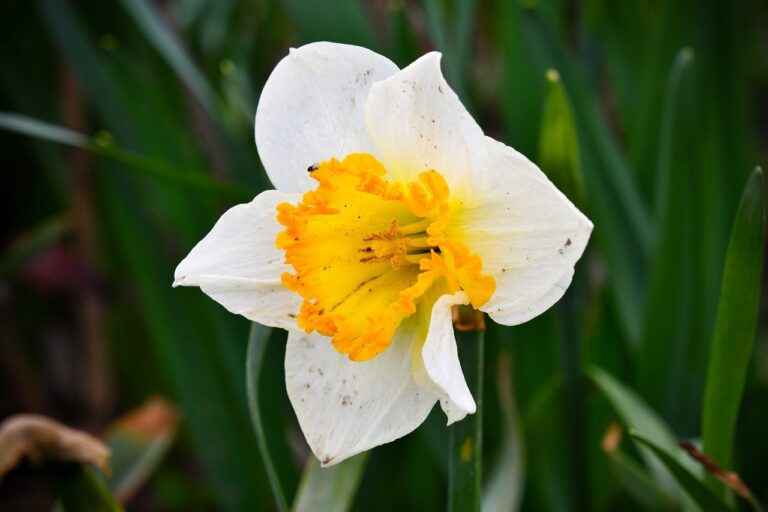How can you tell if a cactus is male or female ?
Cactus is male or female, is it? Cacti are loners and hermaphrodites, meaning that flowers can self-pollinate because they contain both female and male reproductive organs.
Cacti are said to be typically “male” plants. There is a theory that thorns are reminiscent of white weapons, and with this association they instinctively interest even small boys.
These thorns, which are transformed leaves, are one of the hallmarks of cacti. They can be long and short, as stiff as daggers and soft as hair. However, this is not the only amazing feature of these plants. The cactus itself is sometimes spherical like a ball, other times elongated and branched.

The smallest cacti are miniatures perched on the ground, often clustered in numerous colonies (e.g. mamilaria), the tallest, such as carnations, known from American Westerns, reach 20 meters and are as huge as trees.
If we add the beauty of flowers to this, it will come as no surprise that cactus lovers around the world are forming clubs to exchange specimens.
The common name “cacti” stuck to the entire family of cactus, which includes about 2,000 species of plants found naturally in South and North America.
All the features of the construction of cacti are due to the need to adapt to the conditions of the environment. Species growing in the desert armed themselves with various “inventions” to ensure that they would survive drought, terrible heat and very cold nights.
This is achieved by thickened water-storing shoots, fleshy skin and leaves reduced to thorns. These thorns grow from the so-called areola and have a specific system, slightly different in individual species.
Some cacti grow in tropical forests, on tree branches (as epiphytes), have flattened, dangling stems, similar to leaves.
Cacti at home
In apartments, as well as home conservatories, it is best to cultivate proven and long-lived species, such as echinopsis, mamilaria, notocacti, prickly pears, rebutts, notocacti, cereus, glistocacti.
Small specimens can be selected from multi-species kits offered by florists for as low as a few dollars. Overgrown, several-year-old copies reach the price of several hundred dollars.
How to care for cacti
Light. Species with thickened stems need a lot of light. When it is absent, shoots narrow and turn pale green.
If your specimens are kept by a very sunny, closed window in summer, they may get burned, which is reflected in the skin turning brown. On the other hand, epiphytic cacti feel better in diffused light.
Temperature. During the growing season, cacti from desert places endure great heat, but then they should stand in airy places. Epiphytic species thrive best at temperatures around 20 ° C.
Water. In spring and summer, you should water cacti with not very large doses of water. Ideally pour it onto the stand. Between watering wait for the soil in the pot to dry.
Air humidity. Most of cactus can even withstand very dry air. However, epiphytic species like to be sprayed with water.
Power. We only fertilize cacti when they are growing or blooming. It is best to use nutrients specially designed for them, eg Agrecol for Cacti, Beautiful Cactus Flowers. If we use universal fertilizers (eg Florovit for House Plants), we prepare a solution half the size recommended by the manufacturer.
Exaggeration. Cacti do not like to move too often. We only replant them when the roots fill the pot. This is best done at the end of the dormant period, before flower buds appear (only the scumbergera is replanted a month after flowering). The substrate must be permeable.
For species with thickened shoots, it should contain a lot of sand, fine gravel, humus soil and peat substrate – such a mixture can be purchased under the name “cactus soil”. Epiphytic species require a more fertile substrate, e.g. universal soil with the addition of coarse sand.
Summer under the cloud. From May to September, cacti can stand outdoors. It is worth placing them under a canopy (e.g. made of glass) protecting against rain. Suspend epiphytic species in partial shade.
Winter sleep
Species from desert areas fall asleep from October to March – they do not grow and bloom then. During this time, stop watering completely and place them in a cool room (5-15 ° C).
Cacti from humid forests need rest for 3-4 months in winter (only Szlumbergera rests twice for several weeks: just after flowering and in October). Then we limit the amount of water supplied to them, but do not allow the soil to dry out completely.
From one to many
The easiest way to propagate is species that form side suckers or propagules – small plants with their own roots appearing on the main stem. It is enough to separate them from the mother plant in spring, dry them for 1-2 days and plant them in a cactus substrate.
You can also cut off cuttings – fragments of shoots. Sprinkle their ends with charcoal and leave them for a few days, then place them in a mixture of sand and cactus substrate to take root. You can also sow cactus seeds at home.







